

April 10 – 16: “What about beverages?”
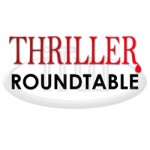 Books often focus in on food but what about beverages? This week a full slate of ITW Members, including Lisa von Biela, Maris Soule, David White, Debbie De Louise, Vicki Delany, Toni LoTempio, Sue Owens Wright, Albert Tucher, Jake Bible, DiAnn Mills, Armand Rosamilia and Kate White discuss how thriller writers work coffee, alcohol or water into the lives of their characters.
Books often focus in on food but what about beverages? This week a full slate of ITW Members, including Lisa von Biela, Maris Soule, David White, Debbie De Louise, Vicki Delany, Toni LoTempio, Sue Owens Wright, Albert Tucher, Jake Bible, DiAnn Mills, Armand Rosamilia and Kate White discuss how thriller writers work coffee, alcohol or water into the lives of their characters.
~~~~~
 Inspired by the likes of Stephen King and Rod Serling, Lisa began writing horror and sci-fi short stories near the turn of the century. Her first published story appeared in Greg F. Gifune’s small press ‘zine The Edge in 2002. She stayed with short fiction, honing her craft and seeing more of her work published, before finally embarking on her first novel, THE GENESIS CODE, released in 2013. After working in Information Technology for 25 years, Lisa dropped out of everything—including writing—to attend the University of Minnesota Law School. She graduated magna cum laude in 2009, and now practices law and writes in the Seattle area.
Inspired by the likes of Stephen King and Rod Serling, Lisa began writing horror and sci-fi short stories near the turn of the century. Her first published story appeared in Greg F. Gifune’s small press ‘zine The Edge in 2002. She stayed with short fiction, honing her craft and seeing more of her work published, before finally embarking on her first novel, THE GENESIS CODE, released in 2013. After working in Information Technology for 25 years, Lisa dropped out of everything—including writing—to attend the University of Minnesota Law School. She graduated magna cum laude in 2009, and now practices law and writes in the Seattle area.
 Albert Tucher is the creator of prostitute Diana Andrews, who has appeared in more than seventy hardboiled short stories in venues including THE BEST AMERICAN MYSTERY STORIES 2010, edited by Lee Child. Diana’s first longer case, the novella THE SAME MISTAKE TWICE, was published in 2013. Characters from Diana’s world also appear in the novella THE PLACE OF REFUGE. Like so many hardboiled authors, Albert Tucher is a librarian in his day job.
Albert Tucher is the creator of prostitute Diana Andrews, who has appeared in more than seventy hardboiled short stories in venues including THE BEST AMERICAN MYSTERY STORIES 2010, edited by Lee Child. Diana’s first longer case, the novella THE SAME MISTAKE TWICE, was published in 2013. Characters from Diana’s world also appear in the novella THE PLACE OF REFUGE. Like so many hardboiled authors, Albert Tucher is a librarian in his day job.
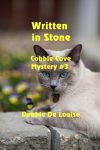 Debbie De Louise is an award-winning author and a reference librarian at a public library on Long Island where she lives with her husband, daughter, and two cats. She is a member of International Thriller Writers, Sisters-in-Crime, and the Cat Writer’s Association. She is the author of the Cobble Cove cozy mystery series that includes A Stone’s Throw, Between a Rock and a Hard Place, and her new release, Written in Stone.
Debbie De Louise is an award-winning author and a reference librarian at a public library on Long Island where she lives with her husband, daughter, and two cats. She is a member of International Thriller Writers, Sisters-in-Crime, and the Cat Writer’s Association. She is the author of the Cobble Cove cozy mystery series that includes A Stone’s Throw, Between a Rock and a Hard Place, and her new release, Written in Stone.
 While Toni Lotempio does not commit – or solve – murders in real life, she has no trouble doing it on paper. Her lifelong love of mysteries began early on when she was introduced to her first Nancy Drew mystery at age 10 – The Secret in the Old Attic. She (and ROCCO, albeit he’s uncredited) pen the Nick and Nora mystery series from Berkley Prime Crime – and the just released Cat Rescue Mysteries from Crooked Lane! The first volume, Purr M for Murder is out now! She, Rocco and company make their home in Clifton, New Jersey, just twenty minutes from the Big Apple – New York. Catch up with them at www.catsbooksmorecats.blogspot.com or at www.tclotempio.net.
While Toni Lotempio does not commit – or solve – murders in real life, she has no trouble doing it on paper. Her lifelong love of mysteries began early on when she was introduced to her first Nancy Drew mystery at age 10 – The Secret in the Old Attic. She (and ROCCO, albeit he’s uncredited) pen the Nick and Nora mystery series from Berkley Prime Crime – and the just released Cat Rescue Mysteries from Crooked Lane! The first volume, Purr M for Murder is out now! She, Rocco and company make their home in Clifton, New Jersey, just twenty minutes from the Big Apple – New York. Catch up with them at www.catsbooksmorecats.blogspot.com or at www.tclotempio.net.
 Sue Owens Wright is an award-winning author of fiction and nonfiction. She is an eleven-time finalist for the Maxwell, awarded annually by the Dog Writers Association of America to the best writer on the subject of dogs. She has twice won the Maxwell Award. She writes the Beanie and Cruiser Mystery Series, which is recommended on the American Kennel Club’s list of Best Dog Books. Her most recent novel is The Secret of Bramble Hill.
Sue Owens Wright is an award-winning author of fiction and nonfiction. She is an eleven-time finalist for the Maxwell, awarded annually by the Dog Writers Association of America to the best writer on the subject of dogs. She has twice won the Maxwell Award. She writes the Beanie and Cruiser Mystery Series, which is recommended on the American Kennel Club’s list of Best Dog Books. Her most recent novel is The Secret of Bramble Hill.
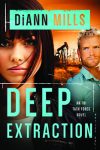 DiAnn Mills is a bestselling author who believes her readers should expect an adventure. She creates action-packed, suspense-filled novels to thrill readers. Her titles have appeared on the CBA and ECPA bestseller lists; won two Christy Awards; and been finalists for the RITA, Daphne Du Maurier, Inspirational Readers’ Choice, and Carol award contests. Library Journal presented her with a Best Books 2014: Genre Fiction award in the Christian Fiction category for Firewall. Connect with DiAnn here: www.diannmills.com
DiAnn Mills is a bestselling author who believes her readers should expect an adventure. She creates action-packed, suspense-filled novels to thrill readers. Her titles have appeared on the CBA and ECPA bestseller lists; won two Christy Awards; and been finalists for the RITA, Daphne Du Maurier, Inspirational Readers’ Choice, and Carol award contests. Library Journal presented her with a Best Books 2014: Genre Fiction award in the Christian Fiction category for Firewall. Connect with DiAnn here: www.diannmills.com
 Maris Soule had 25 romances published before switching to mystery/suspense. So far she’s had 5 mysteries traditionally published. Originally from California, she met her husband to-be in Santa Barbara, and two years later they moved to Michigan. Although Soule taught art and math for 8 years, reading and writing have always been her passion. She and her husband now divide their time between Michigan and Florida.
Maris Soule had 25 romances published before switching to mystery/suspense. So far she’s had 5 mysteries traditionally published. Originally from California, she met her husband to-be in Santa Barbara, and two years later they moved to Michigan. Although Soule taught art and math for 8 years, reading and writing have always been her passion. She and her husband now divide their time between Michigan and Florida.
 Dave White is the author of the Jackson Donne series. His novels have received starred Publishers Weekly reviews, Shamus Award nominations, and have been bestselling ebooks. He lives in Nutley, NJ with his family.
Dave White is the author of the Jackson Donne series. His novels have received starred Publishers Weekly reviews, Shamus Award nominations, and have been bestselling ebooks. He lives in Nutley, NJ with his family.
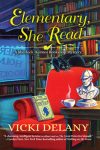 Vicki Delany is one of Canada’s most prolific and varied crime writers, author of twenty-five crime novels, including standalone Gothic thrillers, the Constable Molly Smith series, and the Year Round Christmas Mysteries. Under the pen name Eva Gates she writes the Lighthouse Library cozy series from Penguin. The first Sherlock Holmes Bookshop novel, Elementary She Read, will be released in March 2017 by Crooked Lane Books. Vicki is the past-president of Crime Writers of Canada.
Vicki Delany is one of Canada’s most prolific and varied crime writers, author of twenty-five crime novels, including standalone Gothic thrillers, the Constable Molly Smith series, and the Year Round Christmas Mysteries. Under the pen name Eva Gates she writes the Lighthouse Library cozy series from Penguin. The first Sherlock Holmes Bookshop novel, Elementary She Read, will be released in March 2017 by Crooked Lane Books. Vicki is the past-president of Crime Writers of Canada.
 Kate White the former editor-in-chief of Cosmopolitan magazine, is the New York Times bestselling author of six Bailey Weggins mysteries, including the upcoming Even If It Kills Her (Oct ’17), and five stand-alone psychological thrillers, including The Wrong Man and the newly released The Secrets You Keep. She is also the editor of The Mystery Writers of America Cookbook.
Kate White the former editor-in-chief of Cosmopolitan magazine, is the New York Times bestselling author of six Bailey Weggins mysteries, including the upcoming Even If It Kills Her (Oct ’17), and five stand-alone psychological thrillers, including The Wrong Man and the newly released The Secrets You Keep. She is also the editor of The Mystery Writers of America Cookbook.
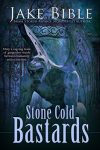 Jake Bible, Bram Stoker Award nominated-novelist and author of the bestselling Z-Burbia series, short story writer, independent screenwriter, podcaster, and inventor of the Drabble Novel, has entertained thousands with his horror and sci/fi tales. He reaches audiences of all ages with his uncanny ability to write a wide range of characters and genres. Other series by Jake Bible: the bestselling Salvage Merc One, the Apex Trilogy, the Mega series, and the Reign of Four series. Jake lives in the wonderfully weird city of Ashville, North Carolina.
Jake Bible, Bram Stoker Award nominated-novelist and author of the bestselling Z-Burbia series, short story writer, independent screenwriter, podcaster, and inventor of the Drabble Novel, has entertained thousands with his horror and sci/fi tales. He reaches audiences of all ages with his uncanny ability to write a wide range of characters and genres. Other series by Jake Bible: the bestselling Salvage Merc One, the Apex Trilogy, the Mega series, and the Reign of Four series. Jake lives in the wonderfully weird city of Ashville, North Carolina.
 Armand Rosamilia is a New Jersey boy currently living in sunny Florida, where he writes when he’s not sleeping. He’s happily married to a woman who helps his career and is supportive, which is all he ever wanted in life…He’s written over 150 stories that are currently available, including horror, zombies, contemporary fiction, thrillers and more. His goal is to write a good story and not worry about genre labels.
Armand Rosamilia is a New Jersey boy currently living in sunny Florida, where he writes when he’s not sleeping. He’s happily married to a woman who helps his career and is supportive, which is all he ever wanted in life…He’s written over 150 stories that are currently available, including horror, zombies, contemporary fiction, thrillers and more. His goal is to write a good story and not worry about genre labels.
- LAST GIRL MISSING with K.L. Murphy - July 25, 2024
- CHILD OF DUST with Yigal Zur - July 25, 2024
- THE RAVENWOOD CONSPIRACY with Michael Siverling - July 19, 2024
